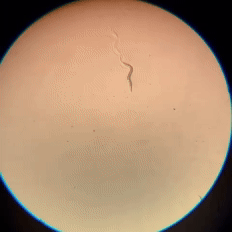THE TANG WORM LAB
Department of Biology
University of Vermont


Why worms
Caenorhabditis elegans is a free living nematode. They are used as model organism for cellular biology, genetics, and neuroscience prominently, due to these advantages:
-
Short life cycle: 3 days from eggs to reproducing adults
-
Easy to maintain: Can be kept between 15C to 25C on a bacteria diet. Can be frozen and revived.
-
Hermaphroditic: Can self fertilize and produce a colony of worms from a single individual
-
Stereotypical development: All individual have the same types and number of cell
-
Transparent: Conducive to optical and fluorescent microscopy.
-
Simple nervous system: Only 302 neurons, ~7500 synapses
-
Conserved genetics: >80% of genes have homologs in human
-
Genetically Tractable: Transgenic and genome modified animals are easy to obtain
How do we look at neural architecture?
In the Tang Worm Lab, we study the connections between specific neurons and observe their dynamic nature. These connections are in part formed through chemical synapses, specialized junctions where one neuron release signaling chemical (neurotransmitters) with millisecond precision. These neurotransmitter is rapidly detected by the partner neuron, which propagates and integrates the signals. Leveraging the resources of the C.elegans community and fluorescent microscopy, we can express markers of synapses under neuron specific promoters, and quantify the connection strength of one single neuron. To study the dynamic of synapses at a even higher specificity, we use in vivo Biotin Labelling of Intracellular Contacts (iBLINC) to label synapses that are formed from specific pairs of neurons. By observing specific synapses, we can determine if the connections between neurons are changing according to internal states and environmental experiences.


How do we study learning in worms?
Although C. elegans have very simple behavior patterns, they use them effectively to search for food and avoid pathogens. In our lab, we use a classical conditioning/associative learning paradigm to test their learning capacity. For example, we pair different salt concentrations with food. Afterwards, we subject the worms to a choice of salt concentration and score where the animal prefer. We are interested to uncover what biological changes accompany associative learning, trying to answer these questions:
1. What are the neural architecture remodeling
2. What genes are activated/suppressed
3. What signaling pathway is involved
We have already identified that the insulin signaling pathway plays an important role and is exploring the detail mechanisms and further implications.
Techniques employed in our lab
Molecular Biology/Genetic Engineering:
-
DNA recombination
-
Creating Transgenic animal
-
Genome editing (CRISPR/Cas9)
Microscopy:
-
Fluorescent Microscopy
-
Calcium Imaging
-
Synapse labeling
C. elegans genetics and assays:
-
Learning and choice assays
-
Genetic screens
-
Single cell RNA profiling